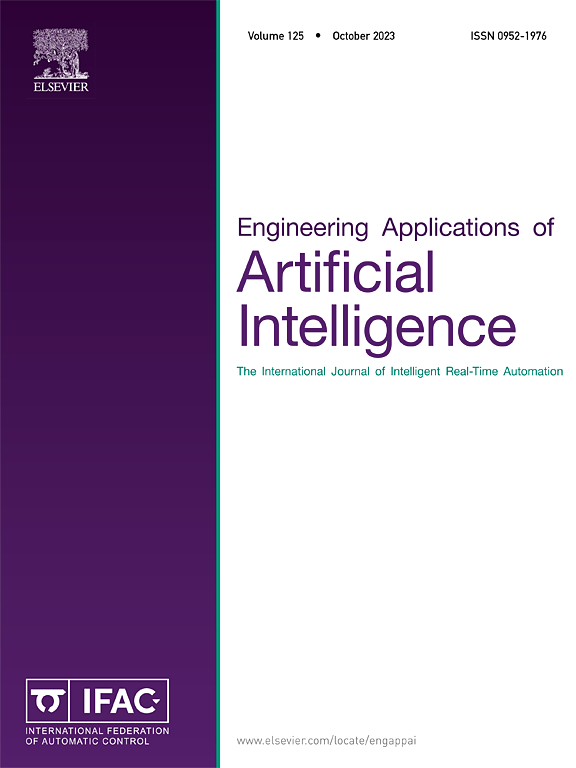利用旋转编码和信息保留机制预测药物与靶点的亲和力
IF 7.5
2区 计算机科学
Q1 AUTOMATION & CONTROL SYSTEMS
Engineering Applications of Artificial Intelligence
Pub Date : 2025-02-22
DOI:10.1016/j.engappai.2025.110239
引用次数: 0
摘要
本文章由计算机程序翻译,如有差异,请以英文原文为准。
Drug–target affinity prediction using rotary encoding and information retention mechanisms
Drug–target affinity (DTA) prediction has been widely used in pharmaceutical research as a novel and effective method to explore the interaction strength between drugs and targets. However, existing DTA prediction models mainly rely on graphical representations of drug molecules, overlooking the intricate interactions between individual substructures. This limitation impacts both the predictive accuracy and the informational richness within the model nodes. To address these challenges, this paper proposes the Rotary Retention Graph Drug–Target Affinity (RRGDTA) network with rotation and retention mechanisms. The RRGDTA integrates an information interaction module into the extraction of drug and target features across multiple scale levels. This approach enhances the correlation within the graph representation, leading to an optimal feature representation. Furthermore, to tackle the issue of limited relationship between molecular structure and context, a Multi-Scale Interaction module (MSI) is proposed to enhance important features related to both. Additionally, to address inaccuracies in the structural features of drugs and targets, a Rotary Encoding Module (ROE) is proposed, which focuses on nearby contextual information and effectively captures the correlation between them. In order to solve the problem of insufficient information representation, an Association Prediction Module (APM) and an Intra-Mask Retention Module (IMR) are proposed to maximize the retention of drug–target information. The efficacy of the proposed RRGDTA in DTA prediction was validated on the Davis, kinase inhibitors biochemical assays (KIBA) and binding database (BindingDB) datasets. Compared with current baseline models, the proposed model achieved better results across various metrics, demonstrating its superior performance in accurate DTA prediction.
求助全文
通过发布文献求助,成功后即可免费获取论文全文。
去求助
来源期刊

Engineering Applications of Artificial Intelligence
工程技术-工程:电子与电气
CiteScore
9.60
自引率
10.00%
发文量
505
审稿时长
68 days
期刊介绍:
Artificial Intelligence (AI) is pivotal in driving the fourth industrial revolution, witnessing remarkable advancements across various machine learning methodologies. AI techniques have become indispensable tools for practicing engineers, enabling them to tackle previously insurmountable challenges. Engineering Applications of Artificial Intelligence serves as a global platform for the swift dissemination of research elucidating the practical application of AI methods across all engineering disciplines. Submitted papers are expected to present novel aspects of AI utilized in real-world engineering applications, validated using publicly available datasets to ensure the replicability of research outcomes. Join us in exploring the transformative potential of AI in engineering.
 求助内容:
求助内容: 应助结果提醒方式:
应助结果提醒方式:


